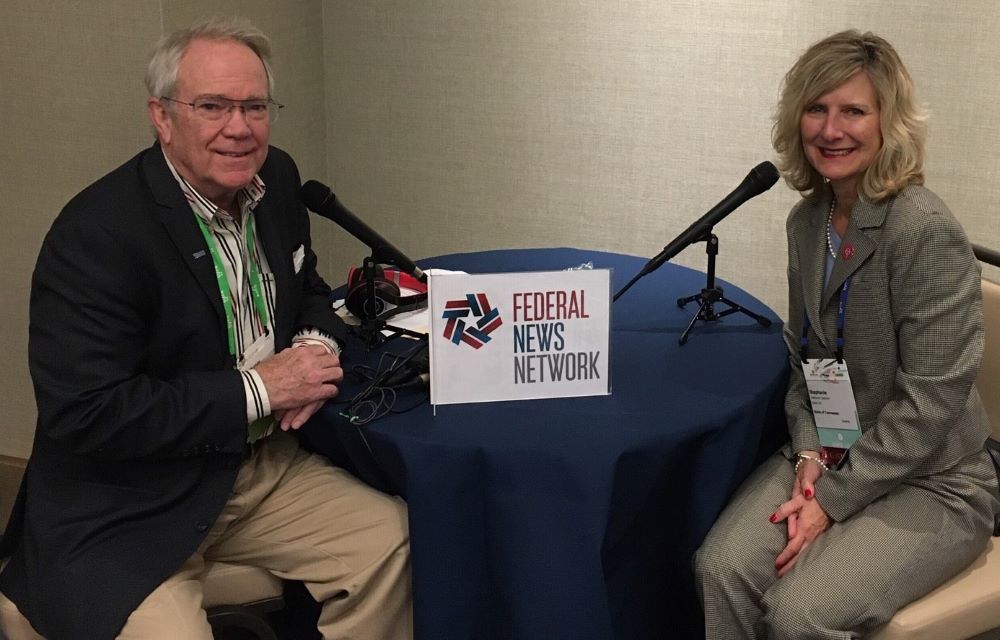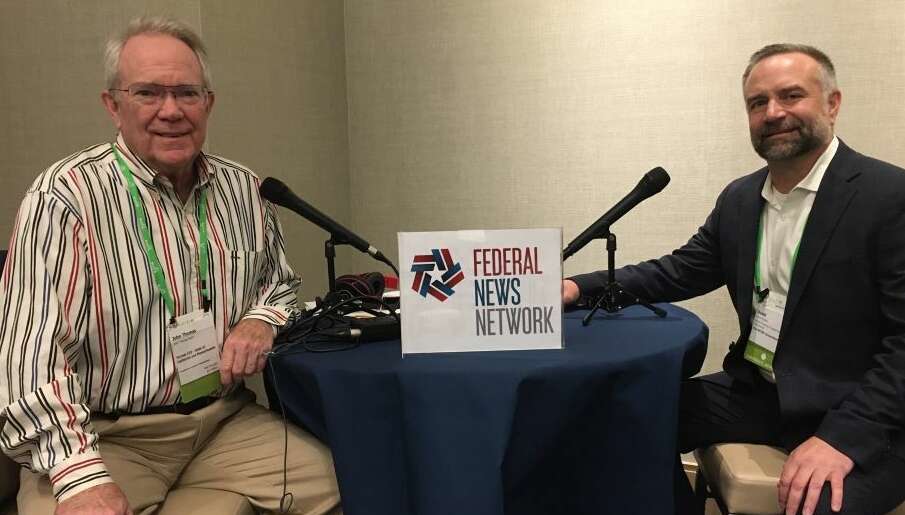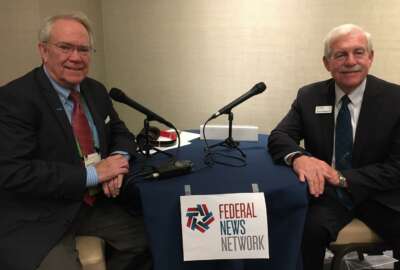

NASCIO host Tennessee CIO Stephanie Dedmon explained her role at this year's annual fall conference and highlighted her state's 2020 priorities. Plus former GAO IT...
The National Association of State Chief Information Officers (NASCIO) celebrated its 50th anniversary recently at its fall conference in Nashville. Federal News Network’s Ask the CIO: SLED Edition was on the scene for the festivities, and I was honored to mark the occasion of my quarter-century association with NASCIO, interviewing a number of state CIOs and NASCIO officials which I will discuss in a series of broadcasts and articles.
The British House of Lords is a rather peculiar institution even among Britons, with its membership being primarily English aristocracy — lords, dukes, barons and the like. Gilbert and Sullivan’s late 19th-century comic operas lampooned this upper house of Parliament as an assembly that didn’t do much, but did it well.
I thought of that line while attending NASCIO’s 50th anniversary in Nashville recently when I had a chance to interview the host state’s Chief Information Officer Stephanie Dedmon. Having held NASCIO conferences while CIO in both Massachusetts and California I’m quite familiar with the host’s responsibilities. As Dedmon pointed out, “I’ll have to be honest and say as being the host my duties are really not very large because the NASCIO staff really takes care of everything. So other than answering a few questions and trying to get our governor to come and welcome everybody, which we were able to do with the video instead because he’s out of the state, my responsibilities were not very great.”

Modesty aside the host CIO is more than window dressing especially when it comes to showcasing the conference city’s attractions while assuring that the state’s IT leadership is well represented at the conference proceedings themselves. In fact, there were over a dozen state of Tennessee government officials in attendance, four or five times the average of the other states.
As to the conference itself Dedmon said that the Sunday state members’ event was one of her favorites.
“It’s obviously just the members and so that’s a more intimate forum for us to touch on a number of issues and just do a lot of sharing and discussing. So that’s always a good session to learn from others and to share as well,” she said.
A favorite session at each annual conference is NASCIO’s state CIO survey presentation. Dedmon agreed, “I think it’s interesting that CRM, customer relationship management, is a rising priority for all of our states. We have a similar model in that we do have folks who focus on the agencies, but we have some ways to go in terms of continuously trying to improve how we measure customer service.”
She added that Tennessee wants to do a better job, from a central state perspective, in partnering with local governments, especially when it comes to security. “That’s an area for us that we need to focus on. I think in the coming year we can extend some of the tools and expertise that we have at the central state level to our local governments,” she said.
Dedmon also highlighted Tennessee’s top priorities for next year. “One is cloud. We’ve not been a cloud-first state. Last year someone said cloud smart and I like to say we’re trying to be cloud smart, so we’re working on a roadmap and a transition as to how we move to the cloud,” Dedmon said. Her second priority was enterprise data analytics, a common theme among state attendees. “Really working with our agencies to help them understand the benefits of data sharing and the capability of the analytical tools will really help us solve problems in a unique and different way,” she said.
I admitted my highlight of the conference was one of the extracurriculars which Dedmon helped arrange, and also took pleasure in elaborating on. “Well, so last night was our premier sponsor reception at the Country Music Hall of Fame and Museum. I think that’s always a great venue and the museum was open for attendees to tour and see the history of country music which is such a part of Nashville — Music City — and who we are,” she concluded.
She did not do much but she did it well.
Our final guest was an old friend and former Government Accountability Office official, Dave Powner, whom I’ve known since the late 1990s when I was appointed to GAO’s Executive Council for Information Management and Technology (ECIMT).
At GAO Powner was the director of IT management issues until he stepped down from the agency in 2018 having served 16 years covering the federal government’s management and modernization of its IT investment and the struggle to empower federal CIOs.

Now with MITRE Corporation Powner is the director of strategic engagement and partnerships. In this new role, Powner contributes his expertise and leadership to promote new levels of impact across the federal, state, and municipal space.
I asked Powner about his attendance at NASCIO and his role with state government.
“So one of the interesting things when I was at GAO, and I always thought it was very important to kind of share success stories between what was going on in the federal government and the states,” he said. One significant example was data center consolidation. “When we were working on that in the federal government, there were a lot of states that were way ahead of the federal government. There were a lot of good lessons learned.”
Conferences are always useful in picking up fun new terminology in IT and the NASCIO annual event was no exception. Powner introduced me to the taxonomy business model (TBM).
“At MITRE we’re doing some work on TBM which is the way to look at your costs, capturing your IT costs. We’re working with federal agencies in terms of how they’re implementing the TBM model,” he explained. Powner acknowledged that states are doing the same thing. They’re looking at applying this model to capture more cost, especially with their cost recovery efforts. “So we’ve actually participated in a webinar with MITRE experts on that, sharing with all 50 states’ CIOs, kind of the lessons learned on strategies and implementing the taxonomy business model.”


“And really it’s important to know what you’re spending, where it’s at, so that you can effectively manage IT. So that’s what the government struggles with and states have some similar problems. So I think the sharing of what we’re learning between the feds and the states is very important,” he said.
Referencing the NASCIO state CIO survey, Powner felt that the one thing that stood out as different between the federal government and the states was the customer relationship focus.
“I think the federal government, they talk about that, but I think they could really do a lot more looking at customer relationships and whether they’re strategically aligned with the businesses, the federal departments and agencies,” he said.
Powner also thought that there were some valuable lessons learned when you look at what happens to organizations like NASCIO or the federal CIO council. NASCIO executive director Doug Robinson has spent some time with federal CIO Suzette Kent.
“They share some issues, some stories back and forth and kind of where there are challenges and strategic approaches and those types of things. I think it’s very important going forward to strengthen the role of these boards, not only the state CIOs, but also the federal CIOs as well,” Powner concluded.
Copyright © 2024 Federal News Network. All rights reserved. This website is not intended for users located within the European Economic Area.
